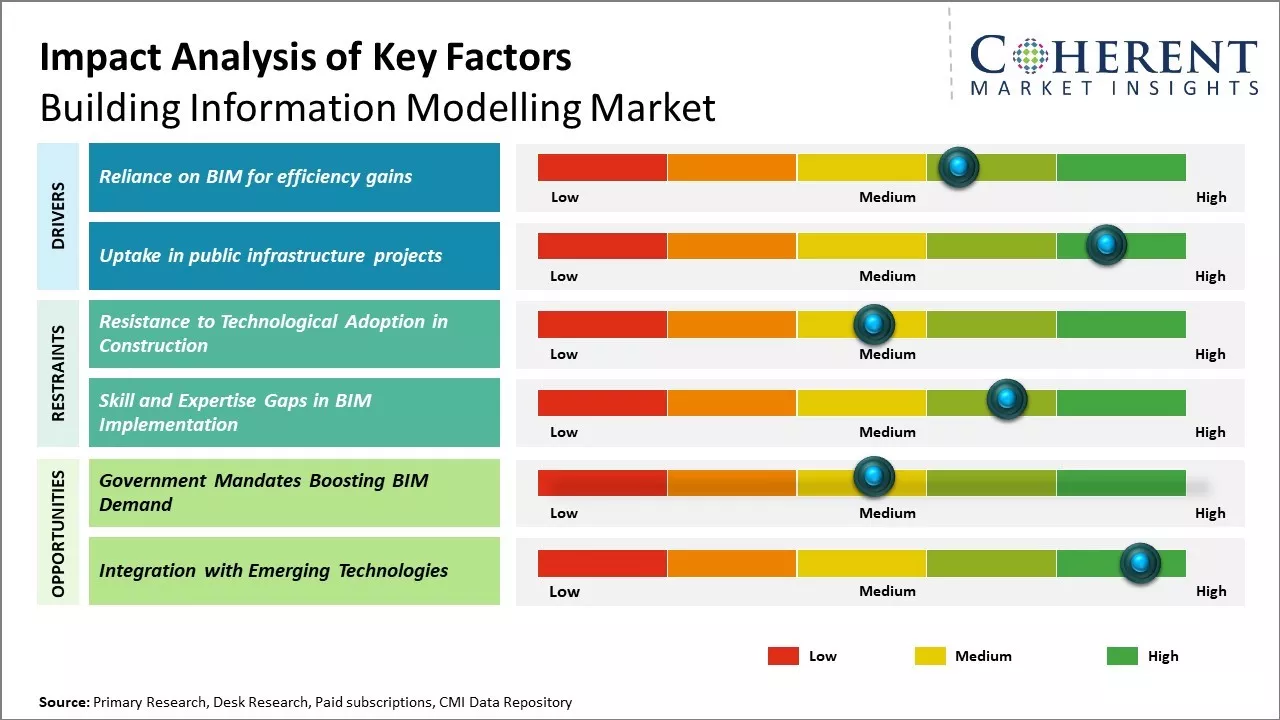Global building information modelling (BIM) market is estimated to be valued at USD 10.07 Bn in 2025 and is expected to reach USD 25.06 Bn by 2032, exhibiting a compound annual growth rate (CAGR) of 13.9% from 2025 to 2032.

To learn more about this report, Request sample copy
Global building information modelling (BIM) market is expected to witness robust growth over the forecast period. There is an increasing adoption of BIM across various infrastructure and real estate projects globally to enhance design, construction, and operation of buildings. BIM helps in facilitating collaboration and data exchange between the project stakeholders. Furthermore, rising need to reduce project time and costs boosts demand for BIM. Government initiatives promoting the use of BIM in public infrastructure projects is further expected to propel the market growth during the forecast period. However, high initial costs for implementation and lack of standardization may hinder the building information modelling (BIM) market growth.
Reliance on BIM for efficiency gains
Architecture, Engineering and Construction (AEC) industry has traditionally been criticized for its linear and fragmented nature, which leads to inefficiencies in collaboration and coordination across project phases. Building projects involve complex designs involving many stakeholders like architects, engineers, contractors among others. Effective collaboration and coordination between these parties is crucial but has historically been a challenge due to different toolsets, work practices and organizational silos. BIM addresses this issue head-on by providing a common data environment in which a digital representation of the building can be designed, constructed and operated. All team members collaborate on one shared digital model, allowing them to see designs in 3D, catch issues early, work together from different locations, and maintain consistent data throughout the project. This allows for more streamlined workflows and easier tracking of changes, leading to significant productivity and efficiency gains. Contractors can prefabricate building components more accurately based on the BIM model. Issues get resolved during design stage itself rather than construction, avoiding costly delays and change orders. Operations and maintenance teams also benefit as the entire lifecycle data gets captured in BIM. With its compelling value proposition of enhancing collaboration, coordination and optimization of building design and construction processes, reliance on BIM for efficiency gains is a major driver for market growth.
For instance, in March 2023, Autodesk Inc. is an American multinational software corporation acquired UNIFI Labs, Inc., a U.S.-based cloud software solution for organizing, accessing, and managing content in digital design tools like Revit and Civil 3D. The acquisition enhances Autodesk's BIM content accessibility through UNIFI's digital asset management capabilities.
Joining thousands of companies around the world committed to making the Excellent Business Solutions.
View All Our Clients